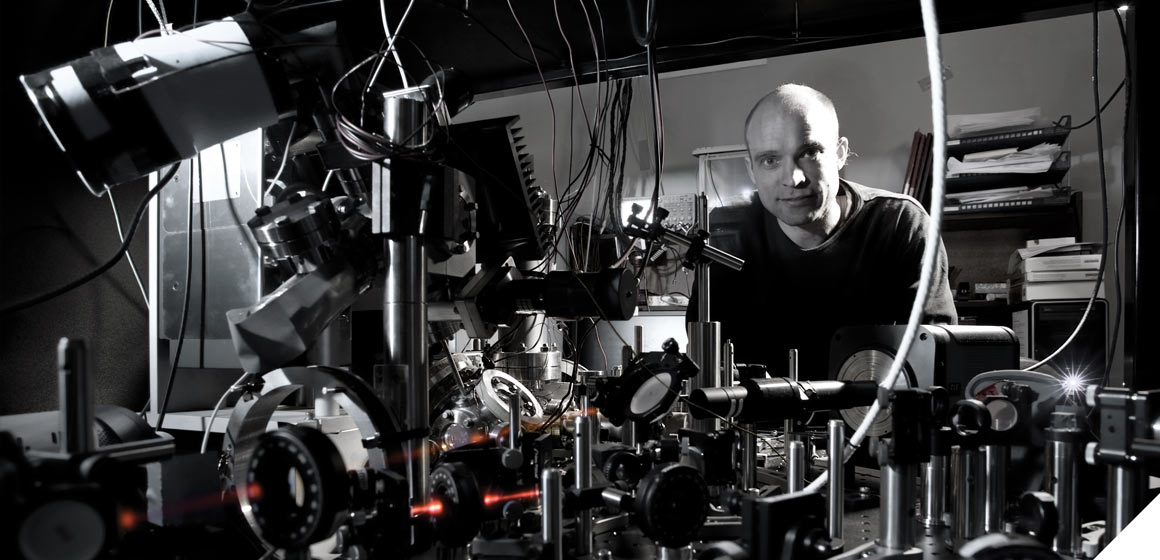
Dr Mikkel Andersen is a builder, but you need some extremely high-powered equipment to see what he's building. Andersen and his team at the Department of Physics are using the world's smallest building blocks to begin constructing the future of technology.
They're working on creating structures from individual atoms – and it is potentially the beginning of quantum devices that could revolutionise our world.
Andersen's team first managed to use laser cooling to slow atoms down to the point where they could capture an atom at will and photograph it. They are now able to consider research that would otherwise be impossible.
Previous experiments with manipulating individual atoms involved moving them on the surface of other materials. Now they can be isolated, which is important at such a small scale.
"The atoms sit levitated away from the materials. They don't interact with their environment, which makes the quantum effect very pronounced.
"We can have quantum entanglement where separated particles share the same state. When you put them close together, the state of one atom will depend on the state of the other. But when you separate them, that connection remains.
"They have a shared connection with each other, which is one of the predictions of quantum mechanics that can be exploited by such things as quantum computers, which are one of the long-term goals."
"We are trying to assemble molecules in a completely controlled quantum state. No one really knows what it will mean to be able to construct things at that small scale."
Unlike conventional silicon-based computers, which generally perform one task at a time, quantum computers have the potential to perform many calculations simultaneously.
Building small controlled systems that measure less than a nanometre – pico devices – has boundless potential.
"When people were trying to push below the micrometre scale in the late 1980s, no one knew that it would cause the technological revolution we have seen over the past 20 years," says Andersen.
Since then, nanometre work has been grabbing the headlines, but now pico-sized research is generating excitement – each reduction in scale being a thousand times smaller than the last.
"We're now working at the scale of atoms, which is about as far as you can go. You can do subatomic things in principle, but at that scale things are not stable.
"We are trying to assemble molecules in a completely controlled quantum state. No one really knows what it will mean to be able to construct things at that small scale.
"We are pushing the boundaries of what can be done and we will see what comes out of that. I find it enormously intriguing, but only the future will tell how important it becomes."
Funding
- University of Otago Research Grant